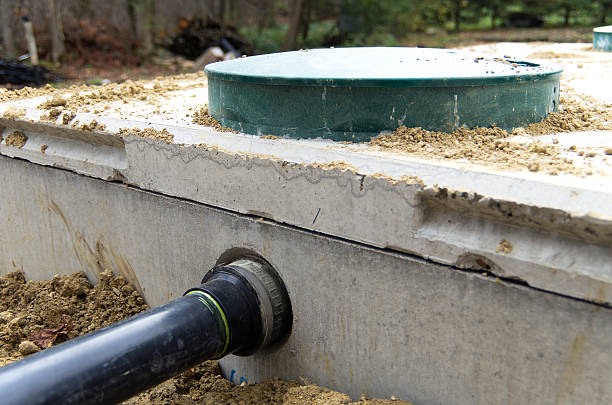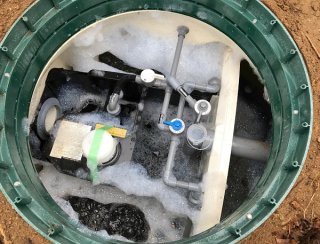Translating the Language of Septic Storage Tank Solutions: A Glossary of Terms for Clear Interaction and Comprehending
Are you confused by the lingo used in septic system services? Do not fret, we've obtained you covered! In this post, we'll help you decode the language of septic system solutions with a helpful reference of terms. From comprehending the fundamentals of your septic system to taking care of sludge build-up, we'll give clear explanations to ensure clear communication and understanding. Bid farewell to complication and hi to a well-kept septic system!
Sewage-disposal Tank: Recognizing the Basics

If you are not familiar with sewage-disposal tanks, they are below ground containers that hold and deal with wastewater from your home. These tanks are an important part of your home's plumbing system, accountable for safely and properly managing the waste produced by your day-to-day tasks. Understanding the essentials of septic systems is important in order to ensure their proper capability and stay clear of expensive repair work.
A septic system includes 2 major elements: the storage tank itself and the drainfield. The storage tank is where the wastewater streams into, and it is made to separate solids from liquids. The solids work out at the bottom of the container, creating a layer of sludge, while the liquids, recognized as effluent, surge to the top. The effluent then moves into the drainfield, where it is further dealt with and dispersed right into the bordering dirt.
Regular upkeep of your septic system is important to protect against problems such as obstructions, back-ups, and system failings. It is suggested to have your container pumped every three to five years, depending upon its dimension and usage. Additionally, it is very important to be conscious of what you flush down the drains pipes and toilets, as specific chemicals and products can damage the microbial balance in the tank.
Drainpipe Field: The Duty of Dirt in Waste Disposal
To maintain the correct capability of your septic system system, it is vital to comprehend the duty of the drainpipe area in waste disposal and just how the surrounding soil plays an essential duty in this process. The drainpipe field, likewise referred to as the leach field or absorption field, is an essential element of a septic tank. Its key function is to filter and treat the wastewater that streams out of the sewage-disposal tank.
As soon as the wastewater leaves the septic tank, it is distributed uniformly throughout the drain area through a network of trenches or pipes. The drain field consists of a layer of gravel or rock, which assists to disperse the wastewater equally and advertise effective filtering. Below the crushed rock layer, there is a layer of dirt that works as an all-natural filter.
The dirt in the drain area plays a crucial function in the therapy of wastewater. As the wastewater percolates through the soil, it undergoes a natural process of filtration and purification. The soil functions as a biological and physical filter, removing unsafe bacteria, viruses, and other pollutants from the wastewater.
The make-up and quality of the soil are vital for the efficient functioning of the drainpipe area - septic tank pumping. The dirt should have great percolation rates to enable the wastewater to move with it conveniently. In addition, the soil should have enough oxygen degrees to support the growth of cardio germs, which aid in the break down of organic issue in the wastewater

Effluent: the Liquid Waste From Your Septic Tank
As the wastewater leaves the drain field, it is referred to as effluent, and it is vital to understand the qualities and monitoring of this fluid waste from your septic system. Effluent is the term utilized to define the cured wastewater that drains of your septic system and right into the drainpipe field. septic tank pumping. This liquid waste consists of a combination of water, organic matter, and liquified solids
Effluent should be totally free and clear of any kind of unpleasant smells. If you notice any foul smells or staining, it might be an indicator of an issue with your septic system. Normal upkeep and pumping of your sewage-disposal tank can assist make sure that the effluent continues to be complimentary and tidy from impurities.
Appropriate monitoring of effluent is important to stop contamination of the surrounding atmosphere. The drainpipe area is developed to filter read the full info here and deal with the effluent before it enters the dirt. It is very important to prevent any tasks that might potentially harm the drainpipe field, such as vehicle parking cars or growing trees with deep root systems.
Sludge: Dealing With Strong Waste Build-up
When taking care of solid waste build-up in your septic tank, proper management of sludge is crucial. Sludge describes the thick layer of solid waste that collects at the end of your septic tank in time. Otherwise taken care of appropriately, sludge can cause numerous concerns, such as blocking, backups, and also system failing.
Routine upkeep is essential to avoid sludge buildup. It is recommended to have your sewage-disposal tank pumped every three to five years, relying on the size of your household and the tank's ability. Pumping eliminates the gathered sludge, allowing your septic system to operate successfully.
Along with routine pumping, there are a couple of steps you can take to lessen sludge build-up. Be conscious of what you flush down the drain. Prevent getting rid of non-biodegradable products, such as paper towels, baby diapers, and hygienic items. These can add to sludge accumulation. Second, think about utilizing septic-safe items that will not disrupt the natural bacterial equilibrium in your system.
Pumping: Keeping the Health of Your Sewage-disposal Tank
Preserve the wellness of your septic system by frequently pumping it. Pumping is a vital upkeep job that assists prevent troubles and makes sure the proper functioning of your septic system. Gradually, strong waste and sludge collect in the container, which can cause obstructions, back-ups, and also system failing. Pumping removes these collected solids, permitting the container to proceed running efficiently.
The frequency of pumping depends on different factors such as the dimension of the tank, the number of passengers in your home, and the use of water. On standard, septic storage tanks need to be pumped every three to 5 years.
Conclusion
So there you have it: a helpful glossary of terms to assist you much better understand the language of septic system services. Whether it's learning more about the basics of septic systems, understanding the duty of the drain area, or knowing exactly how to take care of sludge accumulation, this reference will certainly make certain clear interaction and a better understanding of your septic system. Maintain these terms in mind to maintain you can look here the wellness and performance of your septic system.
A septic container consists of two primary parts: the tank itself and the drainfield.Regular maintenance of your septic storage tank is important to stop concerns such as obstructions, backups, and system failures.To maintain the appropriate performance of your septic container system, it is critical to understand the role of the drain field in waste disposal and just how the surrounding soil plays a crucial duty in this process. It is suggested to have your septic storage tank pumped every 3 to five years, depending on the size of your house and the tank's capability. Whether it's discovering regarding the basics of septic containers, recognizing the duty of the drain area, or knowing just how see this site to deal with sludge buildup, this reference will make sure clear interaction and a far better understanding of your septic system.